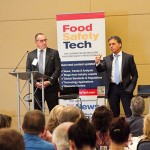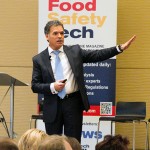Siragusa/Marshall: What can metagenomics data tell us that a Targeted 16S (Bacterial) or ITS (Fungal) Microbiome does not?
Hasan: Actually, the differences are quite profound! With 16S or ITS, you typically only get taxonomic composition of bacterial and fungal community at a genus level. In contrast, metagenomics gives you more precise taxonomic composition of both bacteria and fungi at species, sub-species or strain-level accuracy. Shotgun metagenomics also captures viruses and eukaryotes, and provides information on antimicrobial resistance and virulence genes in parallel, which is not possible with targeted 16S, ITS, etc. Because shotgun metagenomics sequences the entire genetic content of a sample, it offers the opportunity to characterize functional and metabolic potential of a given community. For example, new species, enzymes, or pathways can be discovered. Furthermore, genomic linkages between function and phylogeny for uncultured organisms can be elucidated. Additionally, shotgun metagenomics has high specificity of detection and unbiased measurement of organism abundance. It is more “representative” of the natural community than targeted 16S or ITS sequencing, which can disrupt the natural composition due to PCR amplification bias.
Marshall/Siragusa: Your company’s innovative science and technology uses metagenomics to determine microbiomes of a host of samples and niches. How has the technology of CosmosID changed the whole field of metagenomics?
Hasan: In short, we offer a solution to the data analysis bottleneck created by shotgun metagenomics. Recent advances in next-generation sequencing (NGS) technologies (i.e., significantly increased throughput and rapid turnaround time), have made it possible to sequence complex biological samples deep enough so that metagenomics can be used to identify and characterize all pathogens and commensals in any given sample, thereby establishing community profiling for decision-making. While metagenomics offers many advantages, the time and expense of bioinformatics to piece together complex unassembled reads and lack of comprehensive databases containing curated and validated genomes of all possible organisms of interest was a significant bottleneck for its applications in many critical areas including food quality and safety. Realizing such critical need, CosmosID has developed an integrated platform with novel bioinformatics tools and expertly curated genome databases to facilitate ultra-fast metagenomic analysis with high specificity required for applications like clinical diagnostics and food safety. We converted complex bioinformatics data analysis processes into a simple interface that is user-friendly so that microbiologists, even without any bioinformatics skill, can do their own analysis and obtain rapid, reliable, high-resolution identification and accurate quantitation of microbial populations. Furthermore, characterization of the microbial population attributes, such as antibiotic resistance and virulence is possible with this tool. To our knowledge, the CosmosID platform is the only metagenomics solution that can profile pathogens at sub-species and strain level with highly accuracy. The CosmosID platform even provides comparative statistical analysis across many different datasets based on distinct cohorts and/or other associated metadata. With this technology scientists can now better explore biodiversity, understand microbial interactions and community interplay in various biological processes, and monitor pathogen and antibiotic resistance transmission. When this pool of data is combined, source trace back and outbreak control activities become easier and quicker to manage.
Siragusa/Marshall: Of course the microbial world is not only composed of bacteria. Metagenomics captures sequences of all DNA-based life forms in a sample. Could this tool also be used for detecting foodborne viruses and protozoal pathogens?
Hasan: Oh, yes! The beauty of metagenomics that it’s a one time universal assay; therefore, your detection capability is not restricted to bacteria and fungi only: Metagenomics can also detect both viruses and other non-microbial eukaryotes simultaneously from the same assay.
Siragusa/Marshall: What if a virus in a sample is an RNA virus?
Hasan: That’s a very good question. To capture the RNA viruses, you need to take a slightly different approach, called microbial transcriptomics, where you isolate RNA from a given sample and do RNA sequencing. Interestingly, this approach not only ensures detection of RNA viruses, but also detects all DNA-based life forms. However, this method is relatively more expensive compared to DNA sequencing-based methods.
Siragusa/Marshall: What if a fermented food producer is interested in bacteriophage that might impact their process. Would this technique help them?
Hasan: Yes. Using metagenomics, we can readily identify, detect and track bacteriophages of interest from fermented food products and manufacturing environments. In fact, our curated virus database already includes a large number of bacteriophages, in addition to DNA and RNA viruses. Furthermore, if a fermented food producer encounters bacteriophages that are not listed in our database, we can easily update our database to include those bacteriophage genomes to enable tracking of these specific bacteriophages in the fermented food manufacturing environment. Our ability to confidently detect phages is another key differentiator of our solution, which offers invaluable information particularly when a phage-specific organism appears in a food or environmental sample at low abundance.
Siragusa/Marshall: You indicated that the length of a genome obtained in shotgun sequencing is significantly longer than that obtained by a targeted amplicon sequencing method such as obtained in a Targeted 16S microbiome. Why is that important?
Hasan: Yes, that’s true. Typically bacterial genomes comprise about 4,000 genes; but when you are using targeted sequencing like 16S, you are essentially sequencing only a single gene, such as the 16S gene, or even part of a gene (i.e., variable regions). You are then using the differences you observed in those sequences, which represent only about 0.025% of a genome, to infer identity of a bacterium. Extrapolation of a single gene polymorphism may not be accurate and often loses resolution in detecting closely related organisms. In shotgun sequencing, instead of a single gene, you are sequencing the entire genome and leveraging the sequence information of all or many of these 4,000 genes to investigate the complete genetic make-up of an organism. Shotgun sequencing offers high precision and accuracy in detection and provides information related to other genes, including antibiotic resistance and virulence, and can even reconstruct an organism’s full-length genome to understand evolution, pathogenesis and clonal transmission.
Siragusa/Marshall: Do you envision a time when metagenomics sequencing will become a solution or a “one-stop shop” for microbial diagnostics in food?
Hasan: Yes! When you use metagenomics, you are using an unbiased, culture-free, universal method that gives you the opportunity to investigate complete genetic make-up of a food sample, offering insights into the associated microbial community—their diversity, composition, functional, metabolic and virulence potential. You can also focus on your pathogen of interest to understand its source in a food production environment. Because the food genome is also sequenced, insights on authenticity and economic fraud can also be made. Thus, metagenomics offer a tantalizing new tool for supplier verification activities.
Siragusa/Marshall: Would metagenomics analysis be useful in the monitoring of antimicrobial resistance genes in food production environments or even from bacteria on food itself?
Hasan: Yes, using metagenomics you can readily detect and track antibiotic resistance genes in food production and monitor their transmission. CosmosID has developed a comprehensive antibiotic resistance database that contains resistance gene sequences from all major classes of antibiotics; therefore, you can probe metagenomic or individual bacterial sequence data against that database to profile the antibiotic resistance genes carried by the community as a whole (community resistome) or by the individual bacteria.
Siragusa/Marshall: CosmosID’s technology is intimately tied to curated databases. What is a curated database and what if a specific life-form is not included in that database? For example, you mentioned this earlier in a statement about bacteriophage.
Hasan: Yes, the solution is tied to curated databases. By curated database we mean a database whose content is expertly checked and screened for a variety of common sequence errors, contaminations, miss-assemblies and taxa misclassifications that may otherwise affect accuracy of metagenomic detection. Examples of errors include nematode sequences being submitted at NCBI as a bacterial sequence and human sequence reads assembled into microbial genomes including foodborne pathogens. We do extensive cleaning of genomes before they are incorporated into our databases; however, to get high resolution and accurate results, it takes more than just “clean genomic sequences”. For example, we have built whole genome relatedness trees and due to such phylogenetic organization of our database, we are able to identify an organism down to the sub-species or strain level. Additionally, if a specific life form is not represented in the database, we can identify the organism to it’s nearest phylogenetic neighbor, and statistics of such identification will be indicative of it being a novel organism. Furthermore our database is incredibly flexible. We can readily incorporate new genomes and gene sequences into the existing databases and utilize the modified databases to probe metagenome datasets. This allows us to develop custom databases for specific clients by incorporating any novel and/or proprietary genomes they may have.
Continue to page 3 below.







